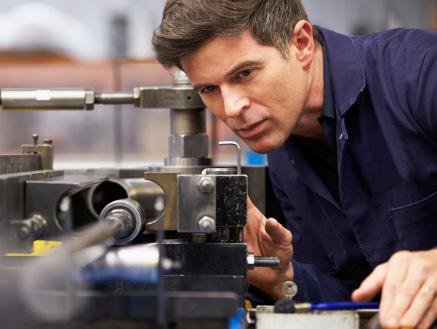
3 minute read
History of Manufacturing in Miami-Dade County
The Miami metropolitan area has been a dynamic and changing urban region since World War II. It began as a tourist and retirement haven and developed a more diversified economy in the post-war years with small-scale and specialized manufacturing spreading during and after the 1950s. Although heavily dependent upon tourism and tourist-related activities, the Miami economy developed an increasingly important manufacturing sector since the time of World War II. Miami was the least industrialized metropolitan area in the United States in 1940 with 3,600 workers or about 3.3 percent of the labor force holding factory jobs. By 1950, manufacturing employment had risen to 14,600 or 9.4 percent of workers. At the end of the fifties, factory work had expanded further, employing about 38,000 people which was about 13 percent of the labor force. 1
Manufacturing employment continued to rise steadily after 1960: reaching about 75,000 in 1970; about 92,500 in 1974; and an estimated 118,000 in 1980. 2 In the 1940s and 1950s, Miami’s manufacturing was characterized by relatively small plants and centered on consumers goods such as food products, bread baking, meat packing, bottled beverages, home furnishings, fishing and sports equipment, and clothing. In addition, local factories provided other products for local needs: concrete and lumber products, fabricated metal and aluminum goods, printing and publishing, and boat building. By the 1970s, Miami manufacturers were expanding beyond local and regional markets and beginning to tap national and international markets. New industries included plastics, electronic equipment, aircraft parts, and medical technology. 3 An extensive garment industry emerged, often using refugees and illegal alien workers who labored under conditions reminiscent of old-time sweatshops. 4 Most of the area’s 4,700 manufacturing firms in 1980 were small, but taken together helped to create a more balanced economy, no longer exclusively dominated by tourism. 5
Advertisement
1 Mohl, Raymond A. 1982. Changing Economic Patterns in the Miami Metropolitan Area, 1940-1948. Tequesta 42: 63-74.
2 Wolff, Miami, 154; “Growth of Manufacturing in Metropolitan Dade County,” Miami Economic Research, 12 (October 1959), 2; Urban Development Services, Metropolitan Miami (Miami, 1962), 31; Robert Johnson, “Recession Sick Southeast Seeks New Medicine,” Florida Trend, 18 (April 1976), 67; “Region’s Focus Turns Toward Development,” Miami Magazine (September 1977), 33.
3 Wolff, Miami, 85-94; Wolff, Miami Metro, 13-15, Jenna, Metropolitan Miami, 43-51; Gene Burnett, “Medical Technology Quietly Becomes a South Florida Growth Industry,” Florida Trend, 19 (April 1977), 149-158; Michael Silver, “Electronics: The Circuits Connect Here,” Miami Herald, Business Monday, August 11, 1980; Robert Dodge, “Health Industry Matures, Suffers Growing Pains,” Miami Herald, Business Monday, September 29, 1980.
4 Barry J. Hersker, “Women’s Apparel Manufacturing in Florida,” Business and Economic Dimensions, 1 (November 1965), 1-4, 18-21; James Risen, “Sweatshops Pervasive in Miami,” Miami Herald, Business Monday, May 18, 1981; Bernard Swartz, “Sweatshops in Fashion,” Miami Magazine, 32 (August 1981), 40-43, 92; Miami News, May 21, 22, 23, 28, 1981; Miami Herald, May 25, 1981.
Over the course of the post-war era, the location of manufacturing in the county shifted. At first, most manufacturing was located in the City of Miami, either in the Central Business District or along a north-south strip running parallel to the two rail lines entering the city, including the Wynwood area. By the 1950s, many industries had relocated to Hialeah, North Miami, and the unincorporated areas in the northwest. More space, cheaper land, lower taxes, availability of a working-class population, and other inducements drew new industry to Hialeah and the northwest area. County zoning policies contributed to the deconcentration of industry as well. Designation of large sections in the western unincorporated area for industrial development, as well as the growth of industrial parks near Miami International Airport and major expressways, has tended to decentralize Dade County manufacturing. Following the dispersal of population, industrial activity extended far beyond the boundaries of the central city.








